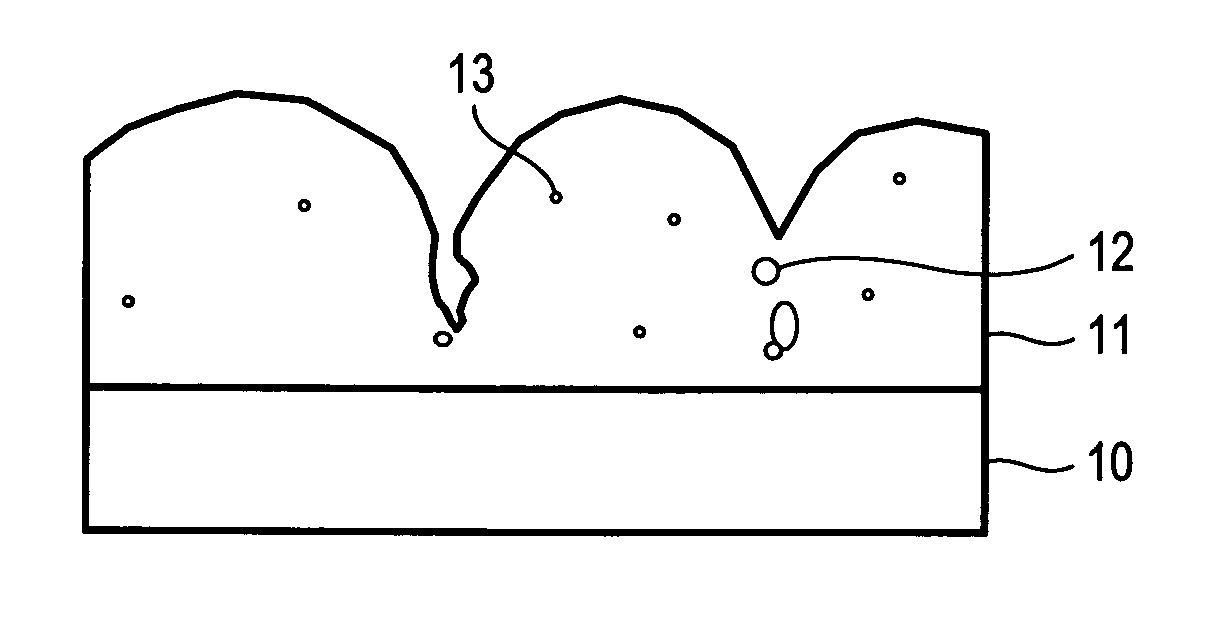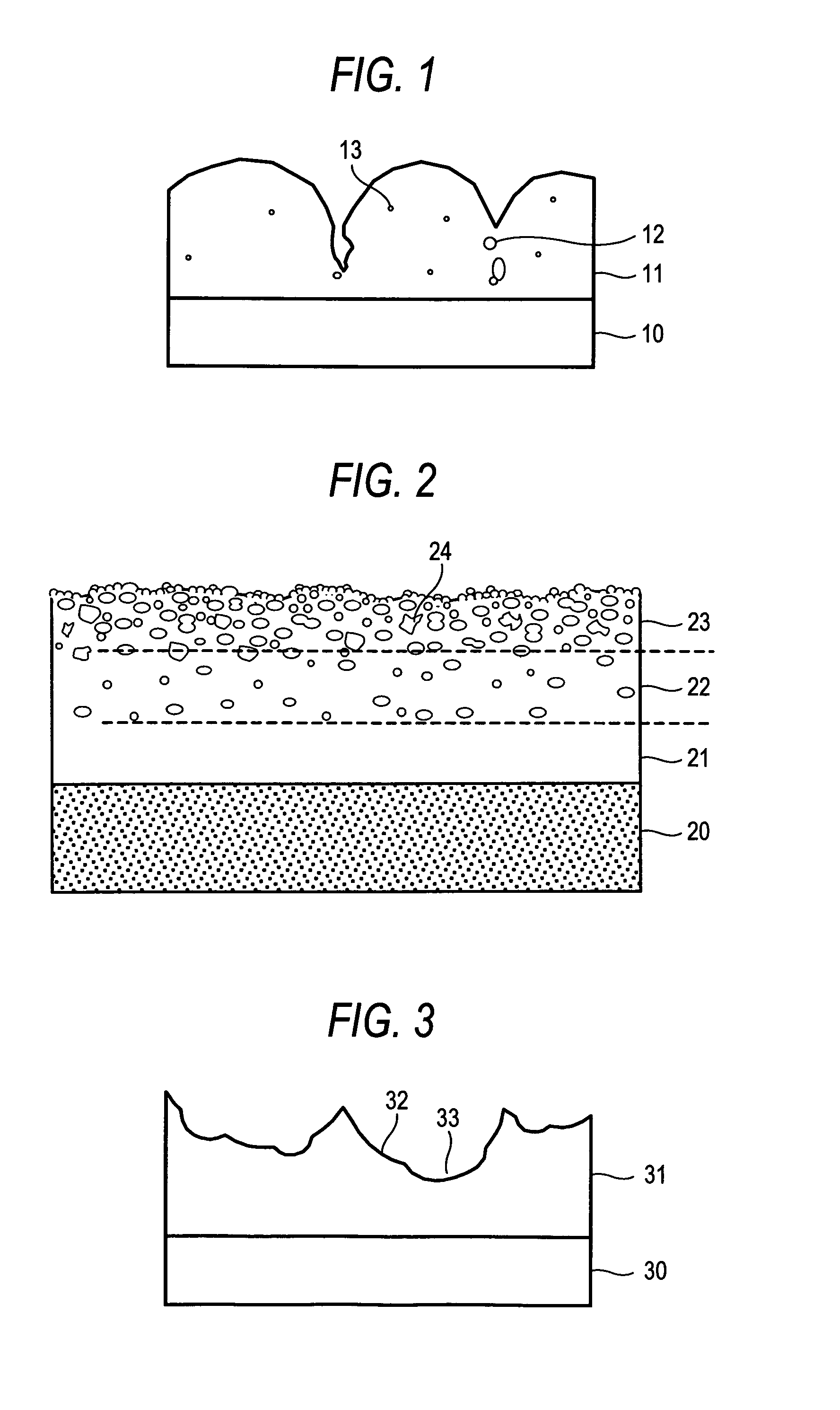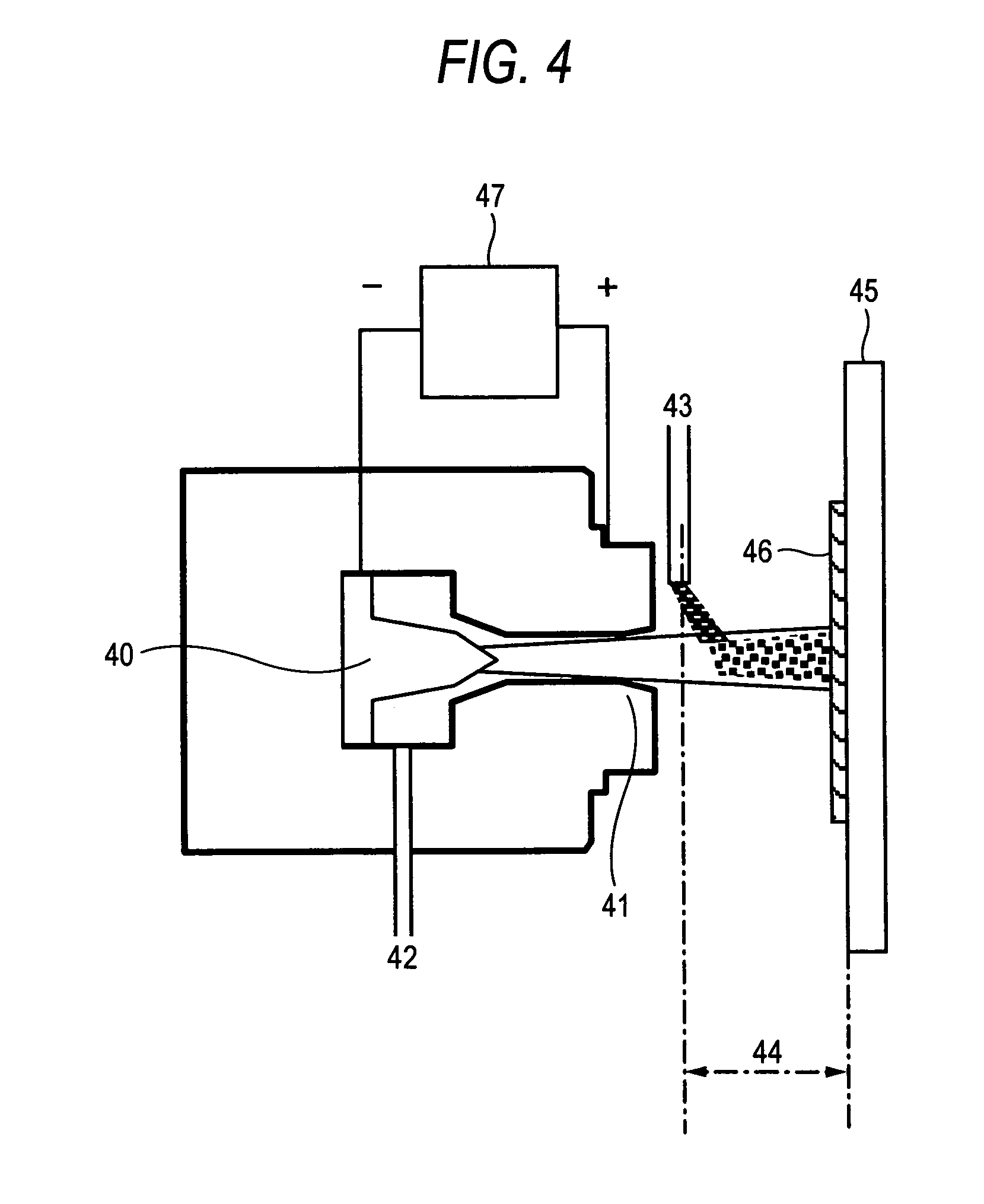Quartz glass thermal sprayed parts and method for producing the same
a technology of quartz glass and thermal spraying, applied in the field of parts, can solve the problems of film deposits on not only the film substrate but also the machine parts such as bell jars, peeling away, and often occurring, and achieve the effects of improving the adhesiveness between the quartz glass film and the substrate, improving the adhesiveness of the parts to and with other parts, and good adhesiveness and sealability
- Summary
- Abstract
- Description
- Claims
- Application Information
AI Technical Summary
Benefits of technology
Problems solved by technology
Method used
Image
Examples
example 1
[0159]Using a plasma thermal spraying apparatus as in FIG. 4, a quartz glass film was formed on a polished quartz glass substrate. The plasma thermal spraying condition is shown in Table 1. To define the thermal spraying condition, a test sample of a blasted quartz glass substrate was tried. The condition under which the surface of the test sample melted to be transparent was employed for the thermal spraying condition in this Example.
[0160]A quartz glass thermal spraying material having a mean grain size of 15 μm, 30 μm, 50 μm or 80 μm was sprayed on the substrate to produce quartz glass thermal sprayed parts, in which the quartz glass film formed had a surface roughness Ra of 12, 23, 35 or 46 microns and a relative density of 88, 78, 70 or 65%, respectively.
[0161]FIG. 6 is a SEM image of the surface of the quartz glass thermal sprayed part produced herein.
example 2
[0163]Using a multi-torch plasma thermal spraying apparatus as in FIG. 5, the same substrate as in Example 1 was plasma thermal sprayed with quartz glass powder under the condition as in Table 1. The length of the thermal plasma was about 300 mm, and the plasma was in the form of a laminar flow. The quartz powder used herein had a mean particle size of 30 μm. The thermal spraying distance from the thermal spray gun was varied to be 90 mm, 120 mm and 140 mm. In that condition, three deposit layers (lower layer, middle layer, upper layer) were formed to be a thermal sprayed quartz glass film on the substrate.
[0164]Thus fabricated, the surface roughness Ra of the quartz glass thermal sprayed part was 35 μm; and the relative density of the quartz glass film was 80% in the upper part, 95% in the middle part and 100% in the lower part. The film had fine bubbles, but did not have any large pores of 100 μm or more. The mean inclination angle of the hillocks and recesses formed in the surfac...
example 3
[0165]Plasma thermal spraying was effected in the same manner as in Example 2, in which, however, quartz powder having a mean particle size of 100 μm was used.
[0166]Thus fabricated, the surface roughness Ra of the quartz glass thermal sprayed part was 90 μm; and the relative density of the quartz glass film was 77% in the upper part, 92% in the middle part and 100% in the lower part. The film had fine bubbles, but did not have any large pores of 100 μm or more. The mean inclination angle of the hillocks and recesses formed in the surface of the quartz glass film was 40°.
PUM
| Property | Measurement | Unit |
|---|---|---|
| surface roughness | aaaaa | aaaaa |
| surface roughness | aaaaa | aaaaa |
| surface roughness | aaaaa | aaaaa |
Abstract
Description
Claims
Application Information
 Login to View More
Login to View More - R&D
- Intellectual Property
- Life Sciences
- Materials
- Tech Scout
- Unparalleled Data Quality
- Higher Quality Content
- 60% Fewer Hallucinations
Browse by: Latest US Patents, China's latest patents, Technical Efficacy Thesaurus, Application Domain, Technology Topic, Popular Technical Reports.
© 2025 PatSnap. All rights reserved.Legal|Privacy policy|Modern Slavery Act Transparency Statement|Sitemap|About US| Contact US: help@patsnap.com



